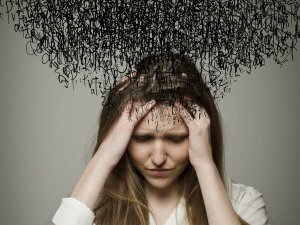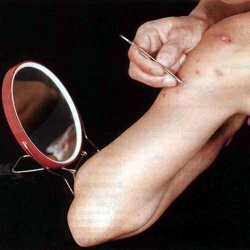Obsession

Description
Obsession is an obsession in which a person periodically develops involuntary thoughts, ideas, ideas. Attention is focused on such thoughts, which leads to long distress( stress associated with negative emotions).
It's very difficult to get rid of unwanted thoughts, but it's impossible to control them.
Obsession is usually associated with compulsion( obsessive behavior) or exists in its pure form. Against the background of an obsessional syndrome, some phobias( fears) may develop.
Classification of obsessions
Obsessions are divided into:
- Abstract. A person experiences an obsessive need to divide words into syllables, count objects, perform obsessions, and reason( reasoning without meaning).
- Pictures. Obsessive memories and thoughts, doubts, fear, the performance of actions in addition to the will, even when aware of their illness.
Reasons for
There are no reliable reasons for explaining the origin of the obsession, today it does not exist. Scientists only have some hypotheses explaining this state.
- Biological. Includes brain diseases, anatomical features of the autonomic nervous system.
- Genetic. Presence of certain signs in a group of people( twins).
- Psychological. Obsession occurs when a person has a personality, under the influence of family upbringing, industrial or sexual factors.
The problem can worsen after illness, childbirth and during the period of feeding a newborn baby. Of great importance is the violation of the exchange of serotonin, dopamine, norepinephrine and neurotransmitters.
Specialists concluded that the most common reason for the appearance of obsessive conditions are individual mental characteristics of a person. To provoke the development of an obsession can children's psychological trauma, conflict situations in the family. To the traumatic factors experts include not only rigidity on the part of parents, but also their excessive custody.
Obsessive-compulsive states can appear after traumatic brain injury, meningitis.
The problem is aggravated against the background of drug and alcohol intoxication of the body, the use of psychotropic drugs.
Symptoms of
 Timely and correct diagnosis allows to save the patient from the problem in a short time.
Timely and correct diagnosis allows to save the patient from the problem in a short time.
The main symptoms of the obsession are the following:
- pallor or redness of the skin;
- syncope;
- cold sweat;
- shortness of breath;
- tachycardia or bradycardia;
- frequent dizziness;
- polyuria( increased urine volume);
- internal fear;
- experience of an imaginary threat to health;
- understated self-esteem.
For a sick person is characterized by suspiciousness, increased anxiety, indecisiveness, impressionability, self-doubt and even a change in character and inadequate behavior.
Diagnosis
Diagnosis of the disease is to identify those most intrusive actions and thoughts. They should be long, at least two weeks and be accompanied by depression.
When diagnosing the following symptoms of :
- repetition of obsessive thoughts to the patient is a concern;
- the patient resists obsessive actions or thoughts;
- patient without desire performs obsessive actions.
The doctor can offer a test for self-diagnosis. It contains questions related to the duration of thoughts and actions, as well as their type. The number of points scored determines the likelihood of having a disease.
A full medical examination is mandatory. The conclusion is made by a psychiatrist and a neurologist.
Treatment
 Treatment is provided by a psychiatrist. A number of therapeutic and psychological activities are carried out. Medications only support the result.
Treatment is provided by a psychiatrist. A number of therapeutic and psychological activities are carried out. Medications only support the result.
Tricyclic and tetracyclic antidepressants are commonly used( Melipramine, Mianserin).Appointed as anticonvulsants.
For normal functioning of neurons of the brain, drugs are prescribed for the treatment of neuroses( Paroxetine, Fluvoxamine).
Psychoanalysis and hypnosis as a therapy are not applied, becauseDo not give a result.
The therapist chooses the method of work, depending on the particular case and its severity. It can be group or family psychotherapy.
Self-help
Specialists note that the patient's independent work on his condition is of great importance.
This requires:
- to avoid social isolation;
- maintain close contact with family members and friends;
- apply the skills obtained in treatment;
- to study sources in which obsessive disorders are described.
The main thing is to learn to relax. Even knowledge of the basics of relaxation, yoga, meditation will help. The incidence of symptoms of the disorder will noticeably decrease.
Folk remedies
Folk remedies for the disease are used only as auxiliary:
- Peppermint broth can be taken as a sedative. Fill a tablespoon of mint leaves with a glass of water, boil for 25 minutes. Drink the broth before breakfast and before dinner for half a cup.
- Strengthening and tonic means tincture of chamomile asters. Pour a glass of boiling water a tablespoon of aster flowers, insist to cool down, drain. Take a tablespoon for the day 4 times before eating.
- Daily eat one banana. It is considered an excellent antidepressant.
Complications of
To the complications of the obsession, the specialists refer to:
- unreasonable fears;
- disorders of the nervous system and psyche;
- experiencing unnecessary anxiety in anticipation of anything.
Prevention
For the purpose of prevention it is necessary:
- to provide full sleep;
- prevent a feeling of fatigue and weakness;
- adhere to a measured lifestyle, to show a sense of proportion and slowness;
- not allow the occurrence of excitation of certain receptors;
- is rational to eat. Products should contain enough protein and trace elements.



